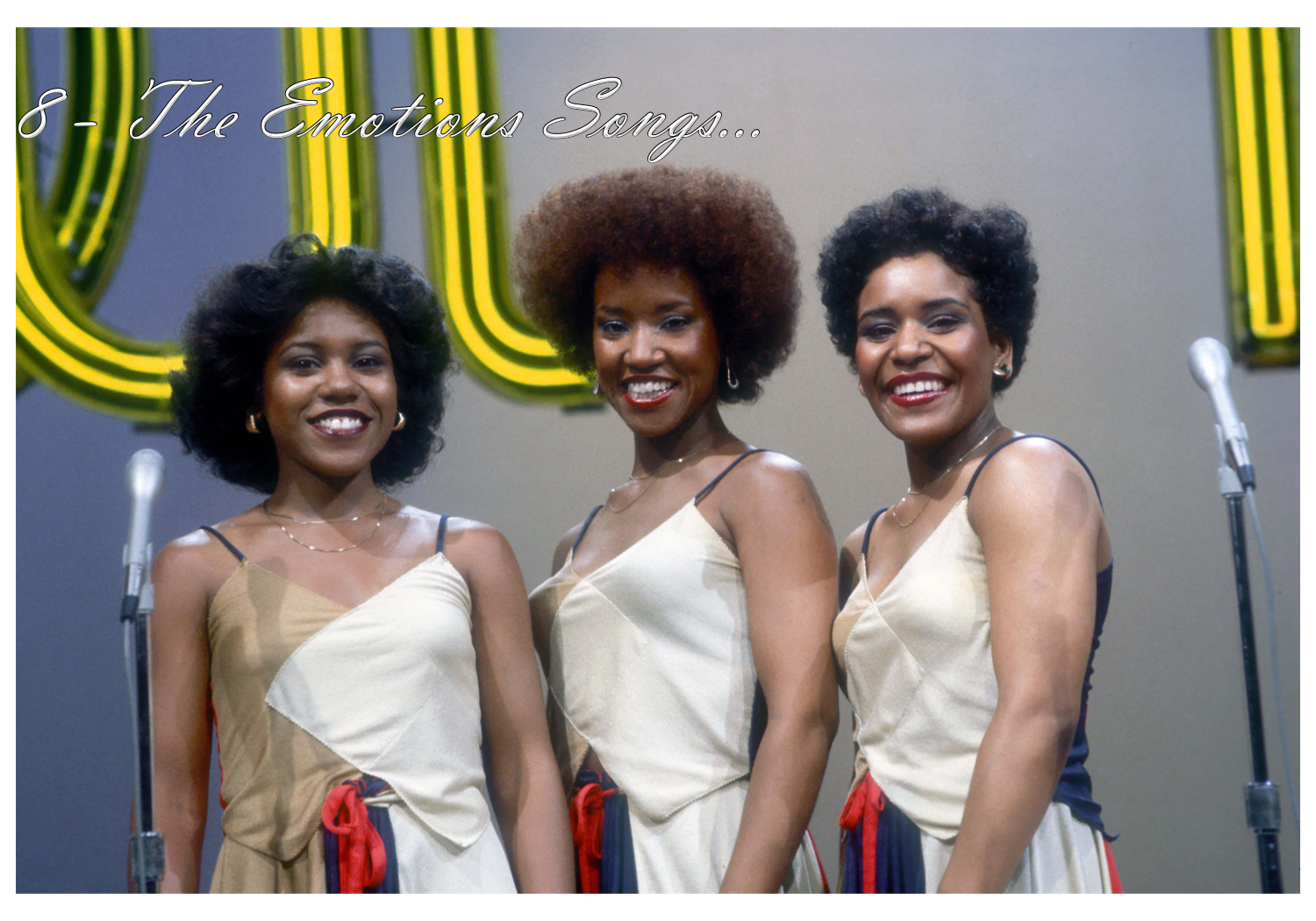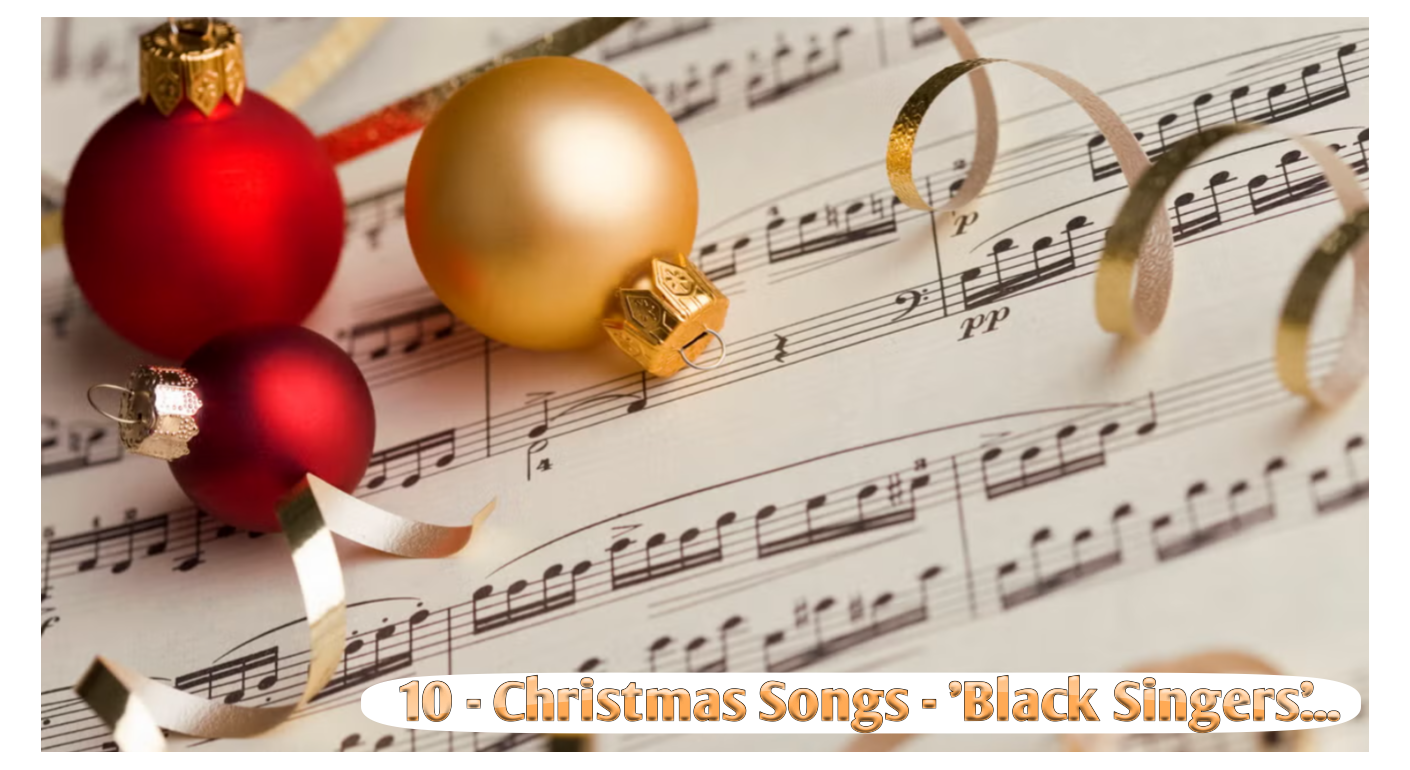(ThyBlackMan.com) The Emotions were never just another R&B group. Formed in Chicago by the Hutchinson sisters—Sheila, Wanda, and Jeanette—they carried the gospel fire of their upbringing straight into the world of soul, funk, and disco. Their harmonies were otherworldly, blending tight church-trained vocals with the swagger of ’70s soul and the sparkle of disco’s golden years. While many fans associate them with their undeniable classics, their catalog is deep, versatile, and still rewarding today. Below are eight songs that stand as testaments to their artistry—songs that can still be listened to and loved in 2025.

1. “Flowers”
“Flowers” wasn’t just a song—it was a statement of arrival for The Emotions on Columbia Records, under the guidance of Maurice White. The Earth, Wind & Fire mastermind infused the track with his signature optimism, layering it with horns, strings, and rhythm that seemed to levitate. Yet, at the core, it was the Hutchinson sisters’ harmonies that gave “Flowers” its eternal glow. Their voices sounded like sunlight breaking through clouds, each note blooming into the next, an audible picture of growth and rebirth.
Thematically, the song transcends the romantic. While it can certainly be heard as an ode to love, the imagery of flowers is symbolic of resilience, triumph, and transformation. In a decade where Black music was deeply tied to cultural pride and personal empowerment, “Flowers” carried a message that was both personal and collective. It asked listeners to see themselves as resilient, constantly growing despite challenges, a theme that resonated with many coming out of the struggles of the early ’70s.
Musically, the track demonstrates the incredible synergy between producer and performers. Maurice White’s fingerprints are all over it—the polished horn charts, the percussive flourishes, the interlacing of gospel-rooted vocals with funk and jazz sensibilities. Yet White never overwhelms The Emotions’ sound. Instead, he frames their harmonies so they can shine, giving the track both sophistication and accessibility. That restraint is what keeps it sounding timeless rather than dated.
Today, “Flowers” plays like a healing ritual. Put it on in the morning and it can feel like a mantra for positivity. At night, it works as reflective comfort. Its lyrical simplicity is balanced by its sonic richness, making it a track that reveals more each time you listen. For younger audiences discovering The Emotions now, it’s a clear reminder of how soul music of the ’70s could simultaneously uplift the spirit and groove the body.
2. “I Don’t Wanna Lose Your Love”
“I Don’t Wanna Lose Your Love” is perhaps one of the most rhythm-forward tracks in The Emotions’ catalog. It doesn’t rely on soaring balladry or lyrical storytelling as much as it relies on groove and feeling. The bassline is hypnotic, the percussion urgent, and the sisters’ vocals ride atop with commanding ease. In many ways, it feels like the moment when funk and disco were starting to blend seamlessly, and The Emotions placed themselves right at the intersection.
Lyrically, the song is a study in contrasts. The words express vulnerability—fear of abandonment, fear of heartbreak—but the delivery is resolute. The Hutchinson sisters don’t sound fragile; they sound determined. This balance between lyrical yearning and vocal strength is what makes the track so powerful. It acknowledges emotional weakness without surrendering to it, creating an anthem of love and defiance at the same time.
The production is strikingly modern in its structure. Its percussive intensity, the layering of rhythm instruments, and the circular bass pattern give it a timeless dance-floor energy. No wonder DJs and producers in house and nu-disco circles have borrowed from it—it carries the DNA of future dance music long before electronic beats dominated clubs. When played in today’s settings, it doesn’t feel like a relic; it feels alive, relevant, and fresh.
In 2025, the song continues to resonate because it understands that great dance music should always contain an emotional core. Unlike tracks built solely for rhythm, “I Don’t Wanna Lose Your Love” carries a story, a plea, and a deep well of feeling beneath its groove. That makes it not only fun to dance to, but also meaningful to reflect on when the music fades. It’s the rare type of song that thrives equally in headphones and on the dance floor.
3. “Blessed”
“Blessed,” from the Rejoice album, captures the heart of The Emotions’ gospel lineage. While many of their songs flirt with spirituality, “Blessed” leans into it with grace and universality. It’s not a sermon, but it carries the weight of one. The song conveys gratitude as a state of being, weaving it into a soulful, mid-tempo groove that could uplift any listener, regardless of religious background.
The vocal performance is tender yet powerful. Wanda, Sheila, and Jeanette trade lines with warmth, layering harmonies that feel like a congregation in unison. Unlike some of their more exuberant tracks, “Blessed” avoids excess. Instead, it sits in a restrained pocket, allowing the simplicity of the message to shine. The Hutchinson sisters’ delivery makes every word feel earned and sincere, reminding listeners of their roots in the church choir.
What makes “Blessed” timeless is the way it avoids being locked into one tradition. Though its title suggests a hymn, the production—complete with subtle strings and rhythm guitar—keeps it grounded in secular soul. This universality allows it to be heard in multiple ways: as a song of romantic gratitude, a reflection on life, or a simple acknowledgment of blessings big and small. That flexibility is why it continues to resonate decades later.
For today’s audience, “Blessed” feels like a grounding track. In an era where much of mainstream R&B leans toward flash and spectacle, its sincerity cuts through the noise. Played at family gatherings, it feels celebratory. Played alone, it feels meditative. Either way, it offers listeners a moment to pause and reflect, which is why it remains a standout in their catalog. It’s not just a song—it’s a reminder to take stock of what we have.
4. “Whole Lot of Shakin’”
“Whole Lot of Shakin’” stands out as one of The Emotions’ most playful and high-energy cuts, showing a side of them that was as infectious as it was musically sharp. It’s built for movement, a song that practically dares you to sit still while it plays. With its relentless rhythm section, vibrant horns, and joyful harmonies, it captures the essence of late ’70s funk-infused disco at its most dynamic.
The Hutchinson sisters bring personality to every line. Their delivery is less about perfect precision and more about energy and charisma. They sound like they’re having fun, and that energy transfers directly to the listener. This is where The Emotions distinguished themselves from many contemporaries—they could be polished and spiritual one moment, then loose and celebratory the next, without ever compromising authenticity.
For today’s listener, “Whole Lot of Shakin’” is an instant bridge back to the golden age of funk and disco. It carries the live-band energy that so much of contemporary dance music lacks. While DJs and electronic producers replicate grooves with machines, this track reminds us of the raw vitality of humans locked in rhythm together. Its energy makes it easy to slide into playlists that mix old-school funk with new-school revivalists like Bruno Mars or Anderson .Paak.
More than anything, the song highlights The Emotions’ role as connectors. They weren’t boxed into one lane. They could deliver a soulful ballad like “Blessed,” then flip the script and drop something as playful as “Whole Lot of Shakin’.” That duality is what made them enduring. In 2025, this track still works as both party starter and cultural artifact. It tells us that joy itself can be revolutionary, and that sometimes the best message music can deliver is simply: dance.
5. “Smile”
“Smile” is one of those understated treasures in The Emotions’ catalog. While the group is often remembered for its more exuberant hits, this ballad demonstrates their mastery of intimacy. Rather than relying on grand crescendos or heavy orchestration, the sisters pull back, allowing the beauty of simplicity to shine through. The piano and strings never overpower the vocals, instead serving as a canvas for harmonies that are as tender as they are precise.
The lyrics elevate something as ordinary as a smile into a profound act of human connection. It suggests that joy and healing can often be found in the smallest gestures, a theme that resonates across generations. The Emotions imbue these words with a warmth that feels less like performance and more like a shared truth. It’s a track that makes the listener reflect on the overlooked acts of kindness that shape everyday life.
What sets “Smile” apart is its restraint. Many R&B ballads of the late ’70s leaned into dramatic builds and emotional excess, but The Emotions chose subtlety here. Their harmonies are soft but never fragile, and each line feels carefully placed. The choice to keep the song understated allows it to transcend its era; it’s not tied to the stylistic trends of disco or funk, but instead grounded in timeless human emotion.
When revisited now, “Smile” takes on even deeper meaning. In a world often overwhelmed with noise, cynicism, and division, its message feels restorative. Listening to it offers a sense of pause—a reminder that joy, however small, is still within reach. Its humility is its power, making it one of The Emotions’ most quietly enduring recordings.
6. “Spirit of Summer”
“Spirit of Summer” captures the essence of seasonal nostalgia in a way few songs manage. With its lush orchestration and cinematic sweep, it feels like a soundtrack to memory itself. The instrumentation paints vivid pictures: warm breezes, sunsets, and the bittersweet feeling of summer drawing to a close. The Hutchinson sisters’ harmonies float above it all, giving the track an almost dreamlike quality.
The Emotions use their voices as instruments of color and texture here. They rise and fall with precision, almost mimicking the ebb and flow of waves or the rhythm of nature itself. Unlike their more groove-driven tracks, “Spirit of Summer” is less about physical movement and more about emotional transport. It’s music designed to take the listener somewhere else entirely.
What gives this track its staying power is its universality. Everyone has memories tied to summer—moments of freedom, love, or reflection—and “Spirit of Summer” taps into that collective well. Even if you’ve never lived through the disco era, the emotions it conjures are relatable. That universality ensures it doesn’t feel dated, but instead timelessly evocative.
In contemporary listening contexts, “Spirit of Summer” functions almost like a cinematic interlude. It fits perfectly into reflective playlists, long evening drives, or quiet afternoons when the listener wants to be transported. It’s less a conventional song than an atmosphere—a musical painting that never fades.
7. “There’ll Never Be Another Moment”
“There’ll Never Be Another Moment” is one of The Emotions’ more overlooked gems, yet it may be among their most poignant. It captures the fleeting nature of time and love with remarkable clarity. Instead of the exuberant joy of their dance tracks, this song delivers a message of appreciation for the present, urging listeners to value what they have before it slips away.
The instrumentation is understated, built on warm keyboards, a steady rhythm, and guitar flourishes that add texture without stealing attention from the vocals. This simplicity allows the harmonies to carry the weight of the track. The sisters sing with an intimacy that feels personal, as if they’re offering a private reminder to the listener rather than performing to an audience.
What makes this track so moving is its sincerity. The Hutchinson sisters don’t oversell the message with vocal dramatics; instead, they let the lyrics speak for themselves. Their delivery feels conversational, almost as if they’re sitting beside you, reminding you of the importance of cherishing each passing second. That directness makes the song even more powerful.
In an era where everything feels fast-paced and disposable, “There’ll Never Be Another Moment” resonates as both a caution and a comfort. It’s a track that encourages mindfulness long before the concept was popularized. Listening to it today, you can’t help but reflect on the people and moments in your own life that you might be taking for granted. Its quiet beauty makes it a timeless entry in their catalog.
8. “Where Is Your Love”
“Where Is Your Love” is a song that blends disco urgency with soulful vulnerability, showcasing The Emotions at their most multifaceted. It’s a track that questions the depth of commitment, wrapping that plea in a groove that is both danceable and emotionally gripping. The contrast between rhythm and message is what makes it so intriguing.
The arrangement is bold and dramatic. Strings and horns create a sense of grandeur, while the rhythm section drives the track forward with intensity. The Hutchinson sisters layer their voices in ways that mimic dialogue, almost as if they’re interrogating the listener. That conversational interplay gives the song emotional weight, turning it into more than just a disco number—it becomes a plea for clarity and honesty in love.
Thematically, the track addresses something that remains timeless: the frustration of unanswered questions in relationships. The repeated refrain of “Where is your love?” is as relevant now as it was in the late ’70s. It embodies the universal search for accountability in love, giving voice to feelings of doubt and longing that never go out of style.
As a closer, it highlights the essence of The Emotions’ artistry: their ability to merge style and substance. They could deliver grooves that filled dance floors while embedding messages that stuck with listeners long after the music stopped. “Where Is Your Love” exemplifies that dual power, making it a fitting bookend to both the album and this list.
The Emotions were more than a vocal group—they were storytellers, harmonizers, and carriers of a tradition that blended gospel fire with secular joy. These eight songs showcase the breadth of their artistry: from spiritual gratitude to disco heat, from tender reflection to unshakable groove. In 2025, their music continues to matter because it wasn’t made just for an era—it was made for the heart. And the heart, thankfully, doesn’t follow trends.

















Leave a Reply